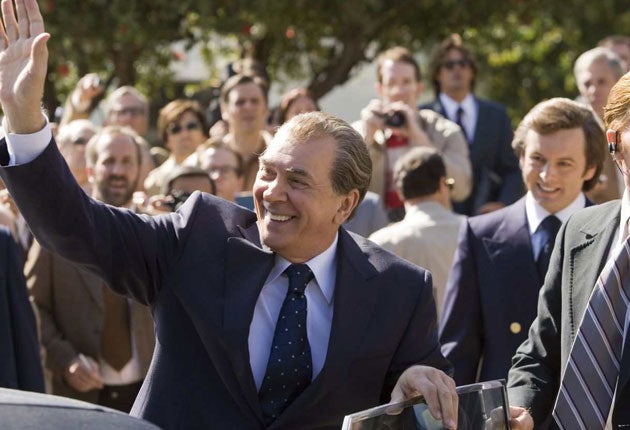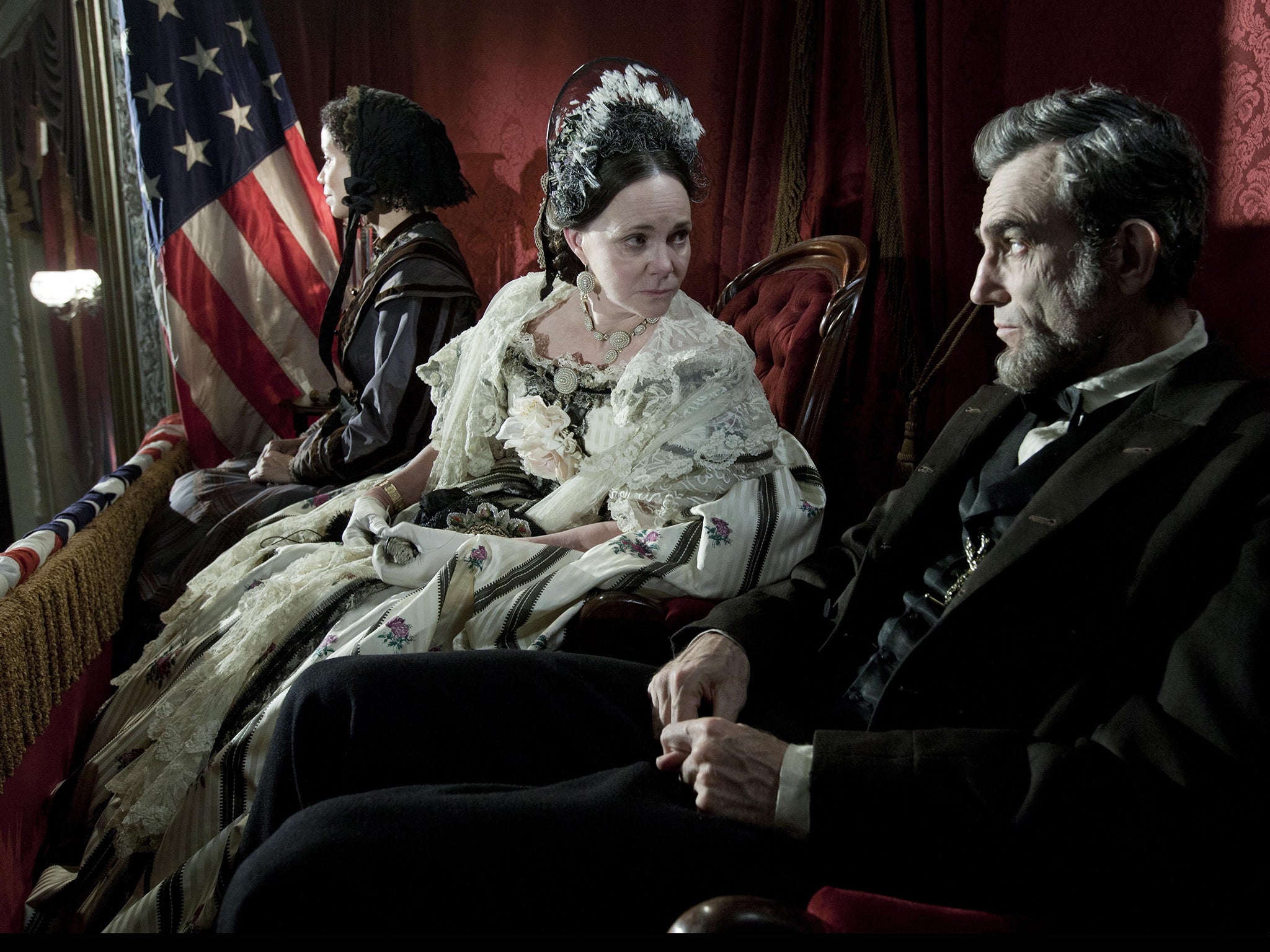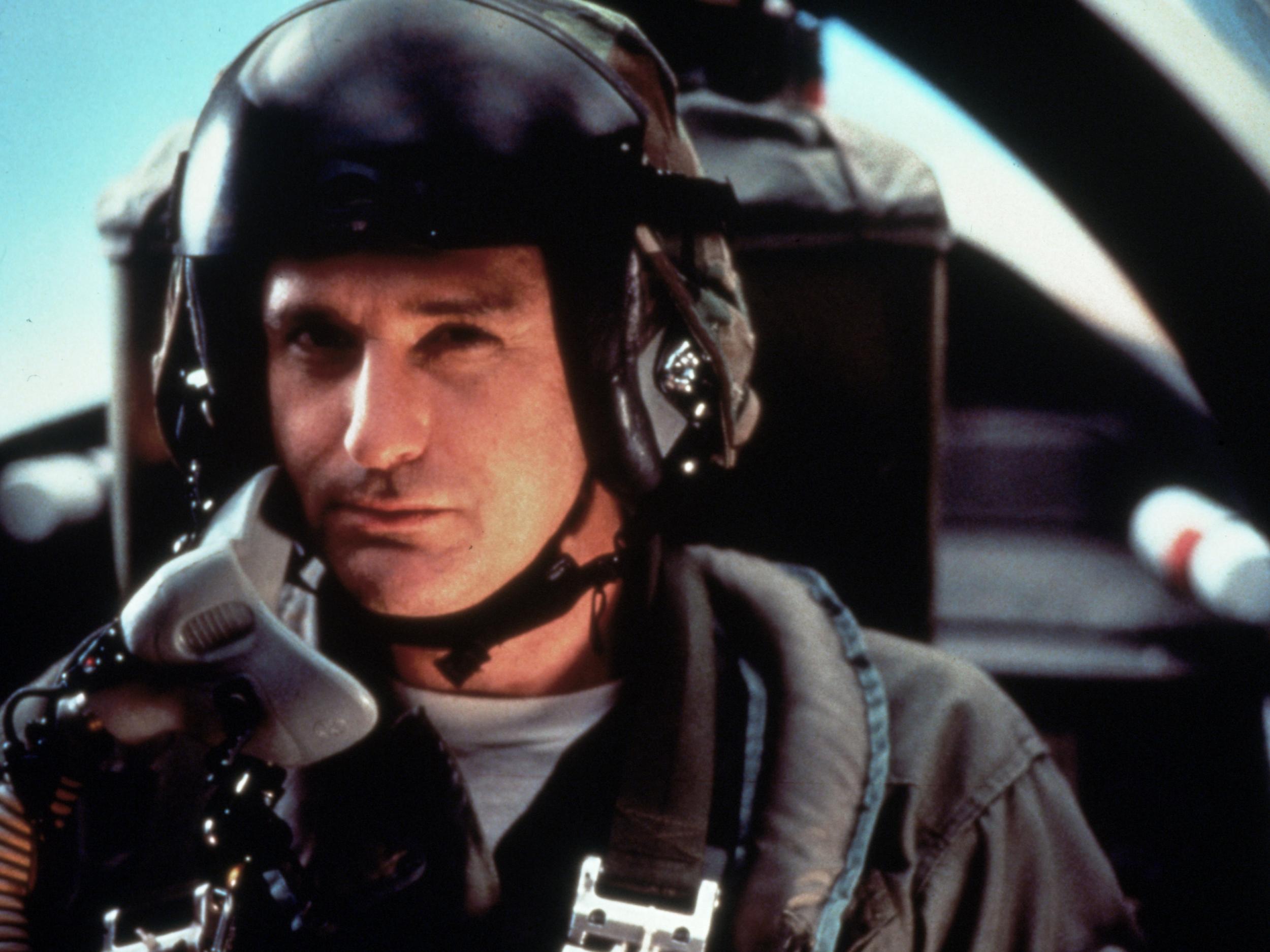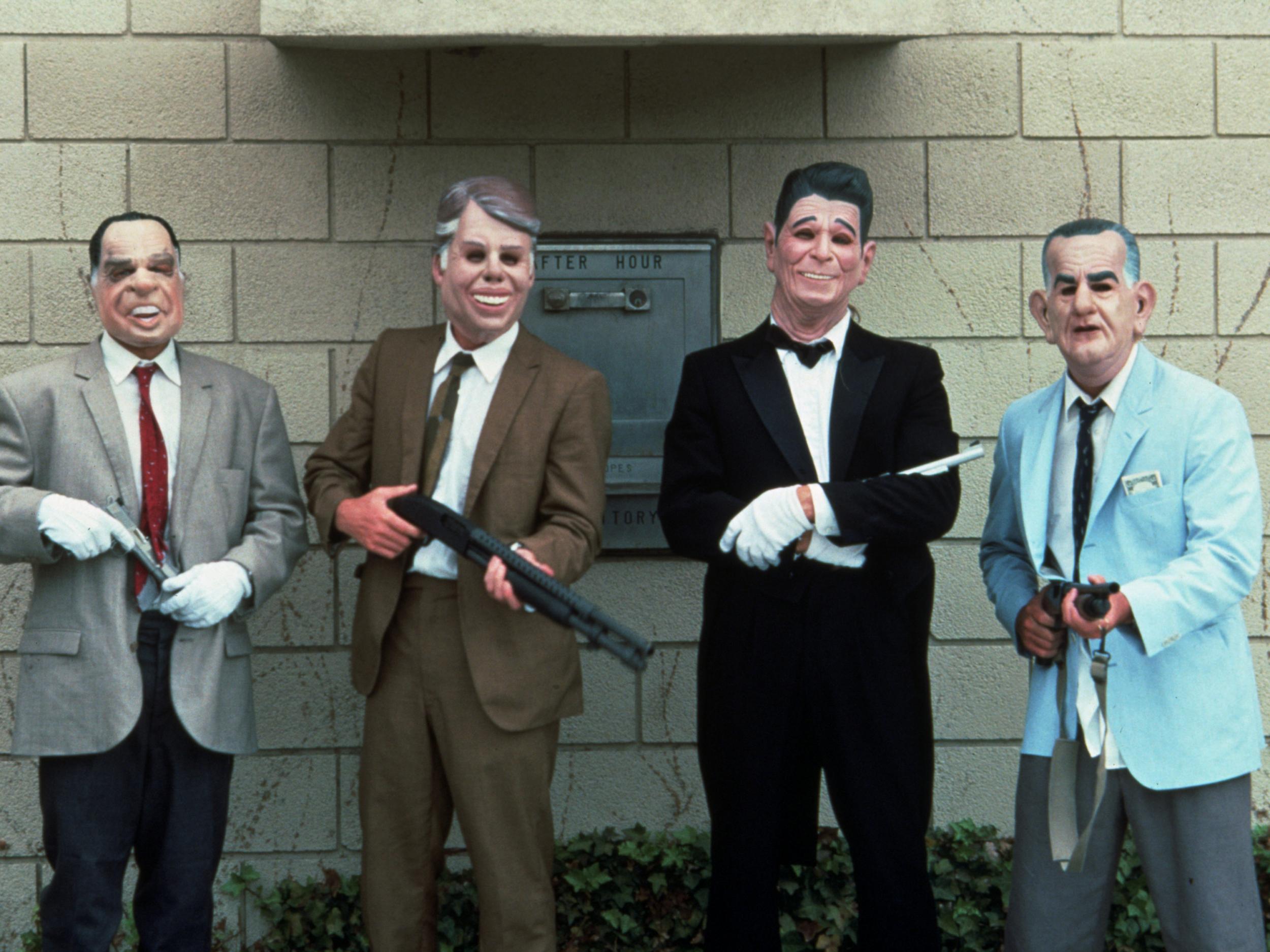Presidents' Day: How the 'leader of the free world' has been played on screen, from conflicted statesmen to heroic action heroes
Daniel Day-Lewis’s Abraham Lincoln and Bill Pullman in Independence Day at opposite ends of spectrum when it comes to dramatising White House corridors of power

Your support helps us to tell the story
From reproductive rights to climate change to Big Tech, The Independent is on the ground when the story is developing. Whether it's investigating the financials of Elon Musk's pro-Trump PAC or producing our latest documentary, 'The A Word', which shines a light on the American women fighting for reproductive rights, we know how important it is to parse out the facts from the messaging.
At such a critical moment in US history, we need reporters on the ground. Your donation allows us to keep sending journalists to speak to both sides of the story.
The Independent is trusted by Americans across the entire political spectrum. And unlike many other quality news outlets, we choose not to lock Americans out of our reporting and analysis with paywalls. We believe quality journalism should be available to everyone, paid for by those who can afford it.
Your support makes all the difference.The third Monday of February is designated Presidents' Day in the United States every year in honour of George Washington.
America's attitude to the occupants of the White House is not always so deferential: Alec Baldwin's regular skewering of Donald Trump on NBC's Saturday Night Live (SNL) has long-angered the president, who has criticised the satirical sketch show on Twitter on several occasions, recently prompting Baldwin to express fears for his safety from enraged Trump supporters.
On the cinema screen, Hollywood has typically treated the office of the presidency in one of two ways: historical presidents are usually given a probing biopic with their surname in the title while their fictional counterparts serve as shining ideals, often capable of piloting Air Force One in a pinch.
Films such as Truman featuring Gary Sinise, Nixon with Anthony Hopkins (both 1995), Lincoln (2012) with Daniel Day-Lewis or LBJ starring Woody Harrelson (2016) all put the president of the United States (Potus) centre stage and dramatise the tough decision-making and compromises that come with power, viewing the office with reverence even if the merits of its current tenant are less certain.
Oliver Stone broke with this formula when he made JFK (1992), exploring the many conspiracy series surrounding John F Kennedy’s assassination rather than his career in the Oval Office, and again with W in 2008 when he played the biopic for laughs, presenting Josh Brolin’s George “Dubya” Bush as an overprivileged hayseed. Sam Rockwell took a similar approach in Adam McKay's more recent Vice.
Other more unusual means of handling the lives of real presidents include dramatising their early days in the manner of a superhero origin story or zeroing-in on a single episode that came to define their term.
John Ford, America’s great national myth-maker, took the former approach when he made Young Mr Lincoln (1940) with Henry Fonda, as did Leslie Martinson and Lewis Milestone when they shot PT 109 in 1963, focusing on JFK’s experience in the US Navy during the Second World War when he was cast adrift in the Pacific after his torpedo boat was sunk by the Japanese. In Merchant Ivory’s Jefferson in Paris (1995), Nick Nolte played the Founding Father as a youthful ambassador to France.
Roger Donaldson’s Thirteen Days (2000) meanwhile focused on JFK (Bruce Greenwood) at the height of the Cuban Missile Crisis, while Frost/Nixon (2008) recreated the famous series of post-Watergate interviews between British TV personality David Frost and Frank Langella’s disgraced Richard Nixon. Ava DuVernay’s Selma (2014), about civil rights leader Martin Luther King, featured Tom Wilkinson in a memorable supporting role as an oily LBJ, basically sympathetic to Dr King’s cause but unwilling to follow his conscience at the expense of votes.

Some presidents have been more frequently played than others. Honest Abe and JFK are always popular (the latter most recently played by Michael C Hall in The Crown), but George Washington is much more seldom seen. Terry Layman playing him in Mel Gibson’s The Patriot (2000) is one recent example. He did also appear in the HBO miniseries John Adams in 2008, played by David Morse opposite Paul Giamatti as Adams, Stephen Dillane as Jefferson and Wilkinson again as Benjamin Franklin.

Watch Apple TV+ free for 7 days
New subscribers only. £8.99/mo. after free trial. Plan auto-renews until cancelled

Watch Apple TV+ free for 7 days
New subscribers only. £8.99/mo. after free trial. Plan auto-renews until cancelled
Steven Spielberg’s slavery drama Amistad (1997) ticked off two lesser seen presidents in the persons of Martin van Buren (Nigel Hawthorne) and John Quincey Adams (Hopkins again, doing better here after looking nothing like Nixon having foregone the all-important prosthetic jowls). Lee Daniels’ The Butler (2013) went further and featured eight occupants of the White House, its titular servant Cecil Gaines (Forest Whitaker) waiting on several generations of president from the 1950s to the present day.

Comedians have sometimes been cast to bring a lighter touch to proceedings. Robin Williams, who played Dwight Eisenhower in The Butler, appeared as a waxwork manikin of Teddy Roosevelt brought to life in three Night at the Museum movies (2006-14), while Bill Murray brought a twinkly charm to Franklin D Roosevelt in the period comedy Hyde Park on Hudson (2012). FDR was previously played by an unrecognisable Jon Voight in Michael Bay’s unloved blockbuster Pearl Harbour (2001).
Impersonations of the president have been a mainstay of SNL since its inception, with Dana Carvey’s George HW Bush one of the finest.
Hollywood’s presentation of fictional presidents is arguably much more revealing about America and its attitudes, especially in action films. Commonly the stuff of conservative fantasy, the president has faced off against extra-terrestrial invasion in Independence Day and Mars Attacks! (both 1996), a meteorite in Deep Impact (1998) and terrorists in Air Force One (1997), Olympus Has Fallen and White House Down (both 2013).
Of these, Roland Emmerich’s hugely popular summer blockbuster Independence Day is perhaps the most striking, its central motif of the White House being blown to smithereens by an alien laser beam featured prominently throughout its marketing but unthinkable just five years later when 9/11 plunged America into its own real-life disaster movie.
Bill Pullman’s President Thomas Whitmore is a former fighter pilot who served in the Gulf War, his skills as an airman enabling him to personally lead the attack on the flying saucers hovering over world capitals, a narrative device that plays to an American reverence for warrior-statesman as ancient as George Washington and Ulysses Grant.
Harrison Ford’s older President Jim Marshall in the following year’s Air Force One was likewise a Vietnam vet, an experience that gave him licence to boot Gary Oldman’s Russian villain into the clouds (“Get off my plane!”). Aaron Eckhart would closely follow their example in the more recent Olympus and its sequel.

This genre also blazed a trail for diversity (or glossed over America’s real racial divide, depending on your point of view). Morgan Freeman, Dennis Haysbert and Chris Rock played black presidents in Deep Impact, on TV in 24 (2001-10) and in the comedy Head of State (2003) respectively, long before the name Barack Obama was known. Samuel L Jackson has done so more recently in the survival adventure Big Game (2014).
Female presidents have been much better served on TV than film, with Geena Davis in Commander in Chief (2005-06), Elizabeth Marvel in Homeland (2011-), Julia Louis-Dreyfus in Veep (2012-) and Robin Wright in House of Cards (2013-) among those to have succeeded where Hillary Clinton failed. Jennifer Aniston will be the next to follow in their stead as the first lesbian Potus in the newly announced First Ladies.
The presidency has actually proven particularly fertile and resilient subject matter for TV’s ongoing box set boom, the high stakes at play in the corridors of power well suited to being served up as instalments in a long-running saga. Aaron Sorkin followed his romantic drama The American President (1995), starring Michael Douglas and Annette Benning, with the widely admired HBO series The West Wing (1999-2006).
A huge labour of love known for its “walk and talk” dialogue and dare-to-dream idealism, the show starred Martin Sheen as economist Josiah Bartlett, a Democratic president proud of his Boston Irish roots with a fondness for folksy repartee and titbits of historical trivia. Sheen’s president is a father of the nation in the most doting sense.

Whether you prefer The West Wing or Netflix’s House of Cards probably says a lot about your personality. Born out of Michael Dobbs’ BBC series about Shakespearean skulduggery in the House of Commons during the Thatcher years, the latter show focused on Kevin Spacey’s Machiavellian schemer Frank Underwood, a South Carolina congressman of murderous ambition and bottomless cynicism. Spacey’s purring evil has gradually been eclipsed by the steely Wright as Underwood’s wife/beard Claire, a narrative thread now very necessary given her co-star’s ousting over sexual harassment allegations.
Some other notable depictions of fictional presidents include: Dave (1993), in which Kevin Kline plays an ordinary Joe who happens to be a dead ringer for the Potus; Wag the Dog (1997), about a war started by spin doctors to distract media attention from a presidential sex scandal; and Primary Colours (1998), starring John Travolta and Emma Thompson as a thinly-veiled parody of Bill and Hillary Clinton.
A caricature of the president in films made outside of the US offers an opportunity for the international community to gently mock the American people and their choice of elected representatives.
Billy Bob Thornton’s unlikely turn as a lecherous president lusting after Downing Street tea lady Martine McCutcheon in Love Actually (2003) joined in the teasing of the Clinton administration over the Monica Lewinsky affair, while the Finnish comedy Iron Sky (2012), about Nazis on the moon, cast Stephanie Paul as a president inspired by gun-totin’ Alaska governor and Republican sweetheart Sarah Palin (also famously the subject of at least one porn film biopic during John McCain’s unsuccessful 2008 run against Obama).
The plight of prospective politicians on the campaign trail has regularly proven a winner for ageing leading men: witness The Candidate (1972), Bulworth (1998) and The Ides of March (2011) with Robert Redford, Warren Beatty and George Clooney respectively. This sub-genre of the political drama was neatly sent up by Will Ferrell and Zach Galifianakis in The Campaign (2014).

Perhaps one of the most memorable images of presidents on screen has little to do with the White House. In Kathryn Bigelow’s classic surfer cop thriller Point Break (1991) starring Keanu Reeves and Patrick Swayze, the gang of bank robbers the undercover FBI agent is pursuing are called the Ex-Presidents and carry out their daring raids wearing rubber masks of LBJ, Nixon and Jimmy Carter. Their ringleader, Swayze’s Bodhi, wears a Ronald Reagan mask. Nobody rides for free.
The Republican president was himself an actor before he became governor of California, a precedent that led to Arnold Schwarzenegger entering politics and which was brutally satirised by Gil Scott-Heron in his 1983 song “B-Movie”. Here the poet argued that America had accepted a second-rate substitute for John Wayne in its search for a tough guy sheriff to guide it through the Cold War.
America’s complicated relationship with its godhead is likely to remain so for the foreseeable future. The inevitable cinematic account of the Trump administration (surely being plotted by McKay) promises to be quite the adventure.
Join our commenting forum
Join thought-provoking conversations, follow other Independent readers and see their replies
Comments